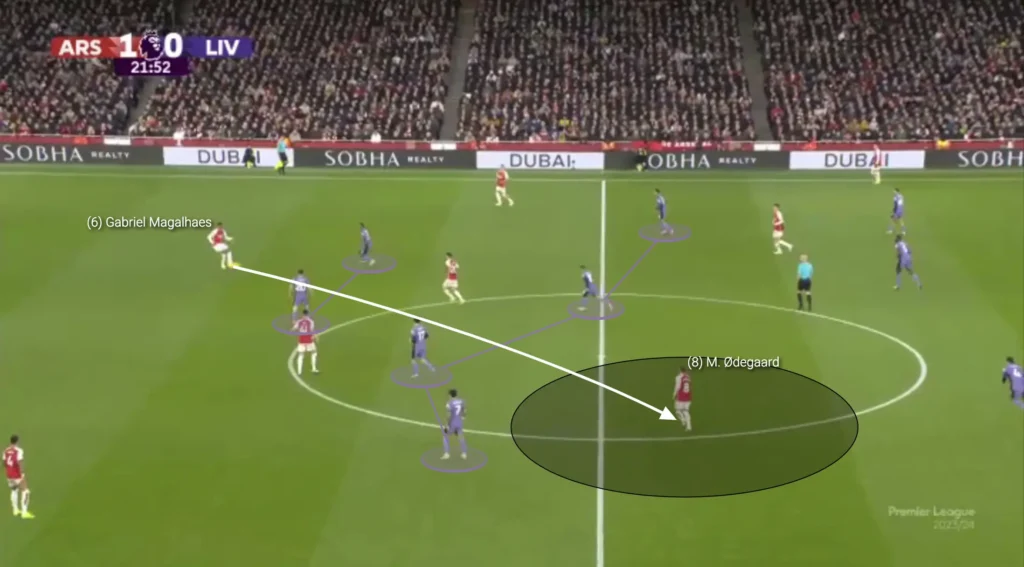Football analysis has come a long way in recent years. We now look far beyond goals, assists, and possession stats to understand how a team functions and how players contribute. One of the most insightful metrics in this modern approach is progressive passes. It reveals which players actively move the game forward, helping break lines and push the ball into dangerous areas.
This article explains what progressive passes are, how they’re defined, why they matter, and how they’re used in performance analysis and scouting.
What Is a Progressive Pass?
A progressive pass is a forward pass that brings the ball significantly closer to the opponent’s goal. It’s not just about maintaining possession or completing a safe pass. It’s about advancing play and creating momentum.

While definitions vary slightly depending on the data provider, most follow this logic:
- A pass that moves the ball at least 10 meters closer to goal when played from outside the final third.
- A pass that moves the ball at least 5 meters closer to goal when played from inside the final third.
- A pass that clearly moves the ball toward goal, rather than sideways or backwards.
The key idea is progression. It rewards intent and impact, not just accuracy.
Why Are Progressive Passes Important?
Progressive passes give us a better understanding of how teams create space, break through defensive lines, and build attacks. They help reveal the players who play a crucial role in moving the ball into threatening areas, even if they aren’t the ones delivering the final pass or taking the shot.
This stat is useful for several reasons:
- It highlights attacking intent and verticality.
- It shows which players are comfortable playing forward under pressure.
- It reveals how a team chooses to progress the ball through different zones.
- It uncovers influence from unexpected positions, like fullbacks or centre-backs.
Rather than focusing only on outcomes like goals or assists, progressive passing reflects the process behind chance creation.
Who Plays Progressive Passes?
Progressive passes aren’t exclusive to midfielders or traditional playmakers. While attacking midfielders and deep-lying playmakers often rank highly, fullbacks and even centre-backs can be among the most frequent progressive passers in modern systems.
Some of the most consistent examples in recent years include:
- Kevin De Bruyne, who plays incisive passes between lines and into the box.
- Joshua Kimmich and Toni Kroos, who dictate tempo from deep.
- Trent Alexander-Arnold, known for his long diagonals and switches of play.
- Frenkie de Jong and Pedri, who progress the ball with both passes and carries.
These players might operate in different zones, but they all share a willingness to move the game forward.
How Is It Different From Other Passing Stats?
Progressive passes measure something specific: the distance and direction of ball progression toward goal. That makes them different from more familiar metrics:
- Pass completion rate reflects technical efficiency, but not ambition.
- Key passes are great for measuring creativity, but only those that lead to shots.
- Through balls are about finding runners behind the defense, but not all forward passes qualify.
Progressive passes sit between build-up and chance creation. They help explain how teams move the ball through thirds and where passing impact begins.
Why Context Matters
Progressive passing should always be viewed in context. A player’s number of progressive passes doesn’t automatically mean they’re better or more influential. The quality and difficulty of the passes, the system they play in, and their role within the team all matter.
Here are a few things to keep in mind:
- A high number of progressive passes may come from a team that dominates possession and has more time on the ball.
- A low number might reflect a counter-attacking style or a deeper defensive block.
- Some players take more risks, which may lead to lower completion rates but higher impact.
It’s best to combine this metric with others—like progressive carries, expected assists (xA), or even video analysis—to get a complete picture.
How Is It Used in Modern Football?
Progressive passes are valuable in multiple areas of the game. Analysts, coaches, and scouts use this data to better understand player roles and team strategies.
Here’s how it’s commonly used:
- In scouting, it helps identify midfielders or defenders who can play forward under pressure and break lines.
- In opposition analysis, it shows who the key distributors are and where teams tend to progress from.
- In player development, it can be used to track improvement in decision-making, bravery, and passing range over time.
Clubs often use this stat alongside visual tools like pass maps and sequence data to improve tactical planning and recruitment decisions.
Final Thoughts
Progressive passes reveal the players who shape the flow of the game. They measure intention, territory, and control—three things that simple pass counts can’t show.
By understanding progressive passing, you get closer to understanding how attacks are built and how top players influence matches before the final third. Whether you’re a coach, analyst, scout, or a curious fan, this stat offers a powerful lens for watching the game more deeply.
